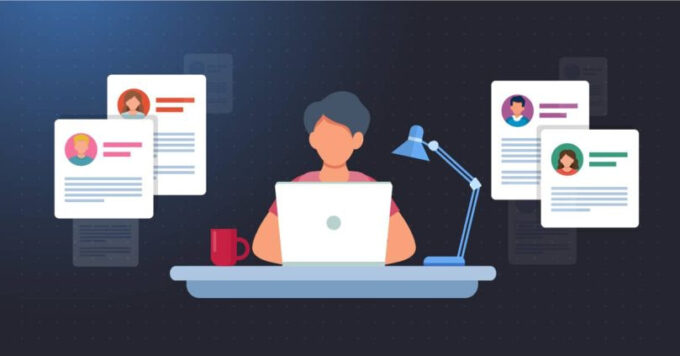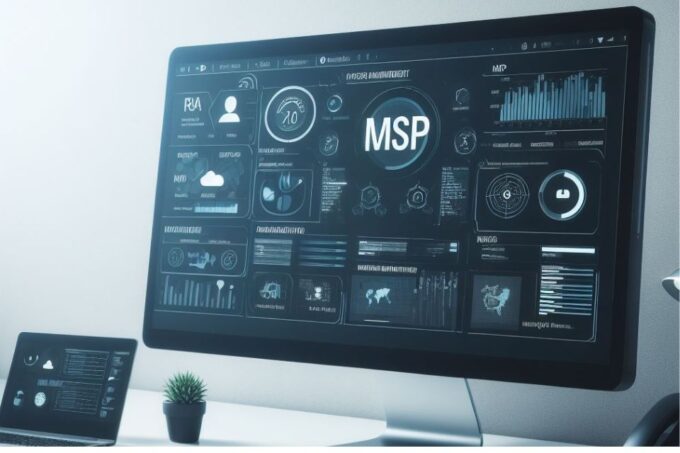See yourself in this situation: you own a bustling restaurant. When new diners arrive, you want to welcome them warmly, show them to their table, and provide menus to ensure they have an excellent experience from the start. Similarly, when customers depart after their meal, ensuring they settle their bill and collecting any feedback to improve for next time is essential.
Just as restaurants have processes for seating new guests and closing out checks, IT-managed service providers (MSPs) need efficient systems or specialized software for onboarding new clients and offboarding former ones. This is where MSP software can be a game-changer, streamlining and automating critical steps to deliver a smooth experience on both ends of the client lifecycle.
The Importance of Client Onboarding

Source: businessnewsdaily.com
Acquiring a new client is a significant milestone for any MSP, but the work doesn’t stop there. Effective onboarding is crucial for setting the right tone and building a strong foundation for the partnership. A well-designed onboarding process helps ensure the client’s IT infrastructure is accurately documented, necessary accounts and permissions are provisioned, and service level agreements (SLAs) are fixed from day one. The establishment of a dedicated IT MSP Software is all the more important.
Without a systematic approach, onboarding can quickly become a disorganized and frustrating experience for both the MSP and the client. Overlooking critical steps could lead to security vulnerabilities, compliance issues, or misaligned expectations about the scope of services. Ultimately, a botched onboarding process can undermine the client’s confidence in the MSP and jeopardize the long-term relationship.
Streamlining Client Onboarding with MSP Software

Source: blog.domotz.com
MSP software can revolutionize the onboarding process by providing a centralized platform for managing and automating key tasks. Here are some ways in which these tools can simplify and enhance client onboarding:
Standardized Checklists and Workflows
MSP software often includes pre-built checklists and workflows tailored specifically for onboarding new clients. These templates ensure that no critical step is overlooked, reducing the risk of human error and inconsistencies. MSPs can customize these workflows to align with their unique processes and client requirements.
Automated Data Collection and Documentation
Gathering comprehensive information about the client’s IT environment is a crucial part of onboarding. MSP software can automate data collection through remote scanning and discovery tools, eliminating the need for manual inventory and reducing the potential for errors. This data can then be seamlessly integrated into the client’s documentation, providing a complete and up-to-date record from the outset.
Rapid Account Provisioning
One of the most time-consuming aspects of onboarding is provisioning user accounts, granting access privileges, and configuring various tools and platforms. MSP software often includes robust identity and access management (IAM) capabilities, allowing MSPs to automate account creation, assign roles, and enforce consistent security policies across the client’s IT ecosystem.
Contract and SLA Management
Clearly defining service level agreements (SLAs) and contractual obligations is essential for setting appropriate expectations and avoiding misunderstandings. MSP software frequently includes features for creating, managing, and tracking SLAs and contracts, ensuring that both parties are aligned from the start.
The Importance of Client Offboarding
While onboarding is crucial for establishing a strong partnership, offboarding is equally important when a client relationship comes to an end. A well-executed offboarding process helps protect the MSP and the client from potential legal and security risks while ensuring a smooth transition.
Failing to properly offboard a client can have severe consequences, such as data breaches, compliance violations, or legal disputes over intellectual property or confidential information. Additionally, a poorly handled offboarding process can damage the MSP’s reputation and make it more difficult to acquire new clients in the future.
Streamlining Client Offboarding with MSP Software

Source: ninjaone.com
Just as with onboarding, MSP software can greatly simplify and enhance the offboarding process by providing a structured framework and automating critical tasks. Here are some ways in which these tools can improve client offboarding:
Standardized Offboarding Workflows
MSP software typically includes pre-built workflows specifically designed for offboarding clients. These workflows outline the necessary steps, such as revoking access privileges, transferring data and documentation, and ensuring compliance with relevant regulations or contractual obligations.
Automated Account and Access Deprovisioning
One of the most critical aspects of offboarding is ensuring that the client’s access to the MSP’s systems and resources is properly revoked. MSP software can automate this process, disabling user accounts, revoking permissions, and deactivating any remaining access points to the client’s IT infrastructure.
Data and Documentation Transfer
Depending on the terms of the client engagement, the MSP may be required to transfer certain data, documentation, or intellectual property back to the client during offboarding. MSP software can facilitate this process by providing secure channels for data transfer and ensuring that all necessary documentation is accounted for and properly handed off.
Compliance and Audit Trails
Many industries and regulatory bodies have specific requirements for offboarding clients, particularly in sectors that handle sensitive data or have strict privacy regulations. MSP software can help MSPs maintain compliance by providing audit trails, logging all offboarding activities, and generating reports to demonstrate adherence to relevant standards.
The Benefits of Streamlined Onboarding and Offboarding

Source: thecybersecuritytimes.com
By leveraging the power of MSP software to streamline and automate onboarding and offboarding processes, MSPs can realize numerous benefits, including:
| Benefit | Description |
| Enhanced Efficiency and Productivity | Automating repetitive tasks and eliminating manual processes can significantly improve the efficiency of onboarding and offboarding activities, allowing MSP staff to focus on more strategic and revenue-generating tasks. |
| Improved Client Experience | A well-designed onboarding process sets the tone for a positive client experience from the outset, while a smooth offboarding process helps maintain the MSP’s reputation and increases the likelihood of positive referrals. |
| Reduced Risk and Improved Compliance | By standardizing processes and ensuring that all necessary steps are followed, MSP software can help mitigate legal, security, and compliance risks associated with onboarding and offboarding clients. |
| Scalability and Consistency | As an MSP’s client base grows, having standardized and automated processes in place becomes increasingly important for maintaining consistency and scalability in onboarding and offboarding activities. |
Conclusion

Source: mspblueshift.com.au
In the ever-evolving world of IT-managed services, onboarding, and offboarding clients are critical junctures that can significantly impact the success of a partnership. By leveraging the power of MSP software, service providers can streamline and automate these processes, ensuring a seamless and efficient experience for both themselves and their clients.
From standardized workflows and automated data collection to secure data transfer and compliance tracking, MSP software provides a comprehensive toolset for simplifying onboarding and offboarding activities. By embracing these solutions, MSPs can enhance efficiency, improve client experiences, mitigate risks, and position themselves for long-term success in an increasingly competitive market.
FAQs
What are client onboarding and offboarding?
Onboarding is the process of setting up new clients, while offboarding involves terminating services for former clients.
How does MSP software help with onboarding?
MSP software automates tasks like data collection, documentation, account provisioning, and contract management for new clients.
What are the benefits of using MSP software for offboarding?
Key benefits include automated account deprovisioning, secure data transfer, compliance tracking, and standardized offboarding workflows.



